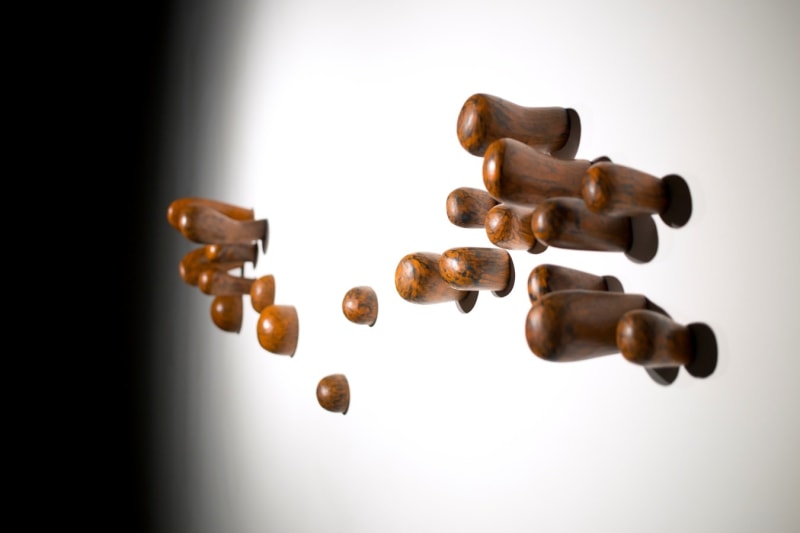
If you come at twilight, you’ll see them: the distorted circular shadows on the walls next to the original Phillips House staircase.They’re cast by Smoke rings, wooden sculptures suspended above the stairs.
“I like to take the gravity away from the piece visually,” artist Ranjani Shettar said at the May 16 opening of her exhibit at the Phillips Collection. “It gives me a thrill to see something heavy hanging high like it has no weight.”
Called Earth Songs for a Night Sky, Shettar’s project draws from her home in rural India, in pieces like Shifting shores and Monsoon. Born in bustling Bangalore in 1977, Shettar now lives and works in the countryside in the Shimoga district of Karnataka.
Earth Songs, which wraps up the staircase and occupies two rooms of the Phillips, is part of a series from the museum and the University of Maryland called “Intersections” exploring the relationships between traditions new and old; art that is contemporary and modern. Shettar’s exhibit was conceived in dialogue with Wassily Kandinsky’s Klänge (Sounds)—which features 56 woodcuts—and paintings by Swiss artist Paul Klee, made in the 1930s: Arab Song, Efflorescence, and Figure of the Oriental Theater. All are on display at the Phillips.
“The relation is more on a level of spirit,” Shettar told Vesela Sretenović, the Phillips’ senior curator of modern and contemporary art, during a talk at the opening. “I like to make things that are playful. I like my pieces to be animated. I like rhythm, I like dance, I like movement. I think that’s what I saw in Kandinsky’s work. And in Klee’s paintings.”
Shettar—whose work has been collected and exhibited by the Metropolitan Museum of Art, Museum of Modern Art, and the Guggenheim Museum in New York as well as museums in San Francisco, Minneapolis, Melbourne, and New Delhi—gravitates toward a variety of materials, from steel and beeswax to wood and fabric, but she pauses when it comes to anything toxic or harmful to the environment.
“I really care about my ecological footprint,” Shettar said. “That really determines and changes what I choose.”
Most often, she leans on organic materials from her own surroundings, particularly indigo pigment and teak wood. In one sculpture, she first envisioned using rawhide, but opted instead for discarded cardboard, woven into a basket-like form. She dyes, carves, and lacquers wood. “I love the colors I can achieve—the tactile quality of it,” Shettar said.
Sometimes it takes her years to finish a sculpture and she often has multiple pieces going at the same time, combining industrial and natural materials. “It’s very hard to start work in an empty studio,” she said.
Shettar’s father was the first to notice her passion for art and encouraged it.
“My dad recognized my ability to draw and he said, ‘She will be an artist when she grows up,” Shettar said. “So I’m really his walking, talking dreams.”
Shettar did not stick to sketches for long. “I make sculptures because I can’t handle two dimensions very well,” she said, laughing.
But during a Q&A on Thursday, a member of the audience raised her hand and commented, “It’s fascinating. You say you’re afraid of white paper, but your sculptures are like drawings in the air.”
-Julie Depenbrock